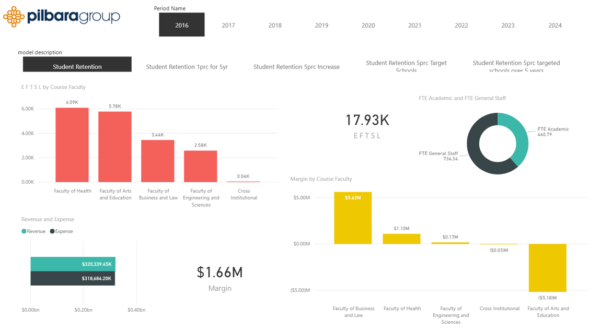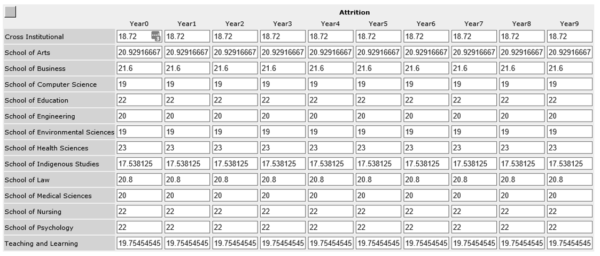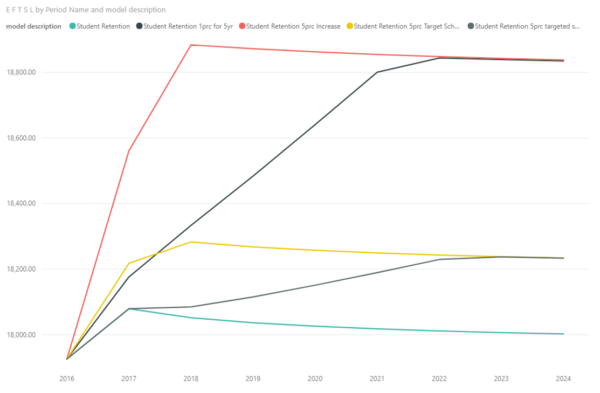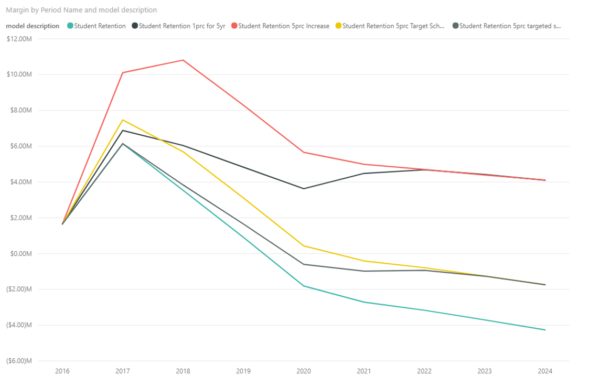A common issue faced by universities around the globe is improving the retention of existing students. How much should be invested in retaining students? At what point is more money being spent than is being gained by retaining the student?
Retention is a hot topic and universities spend a lot of time and effort in implementing many different retention strategies e.g. senior appointments charged with improving retention, significant funding directed at retention, pre-enrolment advising & counselling services, early identification of at risk students. The question we wanted to investigate was ‘what is the return on investment?’ If we know how much the strategy is going to cost to implement what is the financial impact, taking into account the increased revenue and expenses associated with the retained students.
At present there is some guessing or black magic when universities try to predict these expenses/returns due to the difficulties in understanding the marginal costs of students in existing units and also taking into consideration the impact of multiple years of retaining students.
At Pilbara Group we have been building predictive models for many of our clients over many years. The predictive model is based on historic data from the university and can calculate expense, revenue and required FTE for the university for up to 10 years into the future using various levers and inputs, including change in funding, change of EFTSL numbers etc. It has the ability to calculate the cost impacts of changing student numbers, but it was missing the ability to track and change retention rates and ongoing students.
So in the latest update of the predictive model we built in this new feature, that is, the ability to calculate EFTSL from 3 inputs,
commencing EFTSL, graduation rate and attrition rate which together gives us a retention rate. The university can then create scenarios to look at the impact of a change in retention across the university/faculty/school or course by changing the above inputs. It can estimate the financial impact covering the additional revenue and expenses across the university, from direct school costs to overhead from the likes of IT and HR.
With the reporting benefits of Microsoft PowerBI the predictive model can help answer the question ‘what is the return on investment?’
Below are a few examples of reports the latest predictive model can produce.
For the recent L.H. Martin Service Improvement and Innovation Conference we created a few retention scenarios. The base model has retention rates set based on an average sized university, the commencing and graduation rates are set the same across all years. The scenarios are:-
Student Retention 5% Increase immediate across all schools
Student Retention 5% Increase over 5 years (1% per year) across all schools
Student Retention 5% Increase immediate in Target Schools (Nursing, Business)
Student Retention 5% Increase over 5 years (1% per year) in Target Schools (Nursing, Business)
For the model we set the attrition input at the school level, this is the table where you are able change the attrition rate for each year.
The EFTSL numbers in the base model (green line) increase slightly in 2017 then taper off. For the immediate increase in retention (red for the whole university and yellow for targeted schools) you can see there is a delay until 2018 while the previous cohorts finish their courses.
This chart shows the margin by the different scenarios over 9 years, the base model (green line) ends up with a $4 Million loss in 2024 mainly due to CPI growing at a higher rate than student revenue (CPI at 3% but student revenue at 2%, both inputs that can be changed in the model). This chart also shows that the increase in retention to ‘targeted schools’ (yellow and grey lines) will not be enough to bring the university into break even. It’s only when retention is increased across all schools that the university as a whole starts to become financially sustainable.
It’s very important to understand that, although an improvement in student retention will increase revenue, it does come at a cost. The more students there are, the more direct costs (academic staff from multiple schools/departments) but also a range of indirect costs as well, including supporting professional staff and administrative staff.
All of this needs to be considered as part of any retention strategy process. It’s not just a simple calculation, it’s a complex relationship between departments, faculties, schools and administration to ensure the university is financially sustainable with an improvement in student retention.



